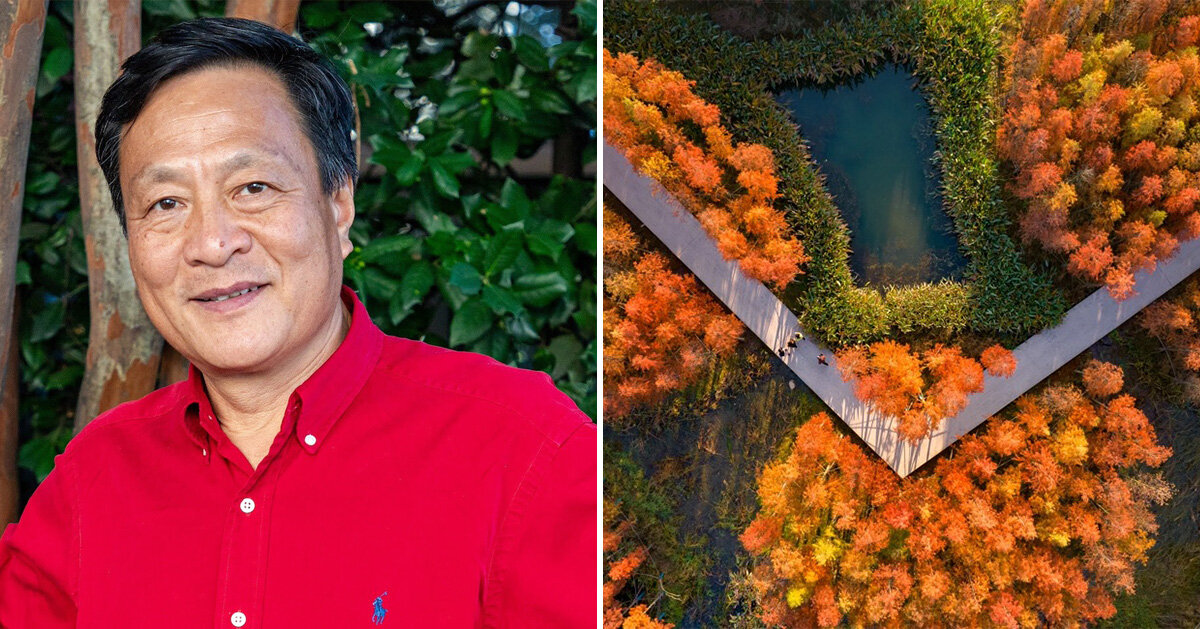Congjian yus legacy in urban design
Landscape architect Kongjian Yu, who died on September 23, 2025 in a small plane crash in Brazil at the age of 62 Design framework This uses natural landscapes and natural -based solutions to catch, store and clean urban water.
When cities around the world have to struggle with floods, water shortages and the consequences of quick urbanization, the Chinese architect and his practice Turenscape spent an alternative for three decades. His vision of The Sponge City has shifted from an academic concept to national politics in China and an international model for the resistance of the climate.
The concept, which was officially transferred to the Chinese government's urban development policy in 2014, was expected to influence more than 80% of the middle to large Chinese cities by the end of the decade. Yu's work combined scientific research with a practical design and shows how ecological infrastructures alleviate floods, charge groundwater and support biological diversity and at the same time create public green spaces.
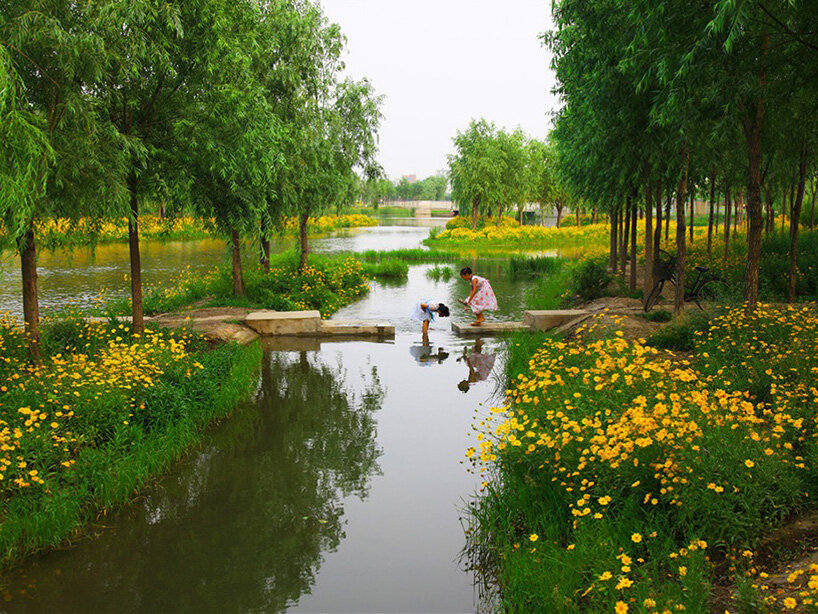
Qian'an Sanlihe River ecological corridor | Pictures of Turenscape, unless otherwise stated
Scaling of sponge cities: from regions to neighborhoods
Sponge City's strategy works in three scales. On the macroscala, national and regional planning focuses on the protection of ecological water processes and maintaining an equilibrium between human activity and natural hydrology. Large projects protect rivers, wetlands and meadows and form ecological security patterns that lead the urban expansion and the development of the infrastructure. Regions such as Beijing, Taizhou and Weihai have included these principles in regional planning, whereby the water -sensitive ecological infrastructure emphasizes.
At the middle level, Sponge City Principes lead urban development over several up to ten square kilometers. Plans integrate green infrastructure into the existing urban substance, the limits of the system boundaries and the determination of regulatory and design guidelines. Remarkable examples are Haikous Mish River Greenway, the ecological corridor of Qian'an in Sanlihe River and the Nanchang Fish Tail Park, in which flood protection, habitat restoration and public recreation are in functioning urban ecosystems.
Municipalities and households take part in rainwater management on the Micro scale. Green roofs, permeable courtyards and other small ecological infrastructure convert residential land into functional “green sponges”. Studies suggest that the conversion of even 20% of the living country into green infrastructure can significantly reduce urban floods, which shows that effective water management is both a city -wide and an effort at neighborhood level.
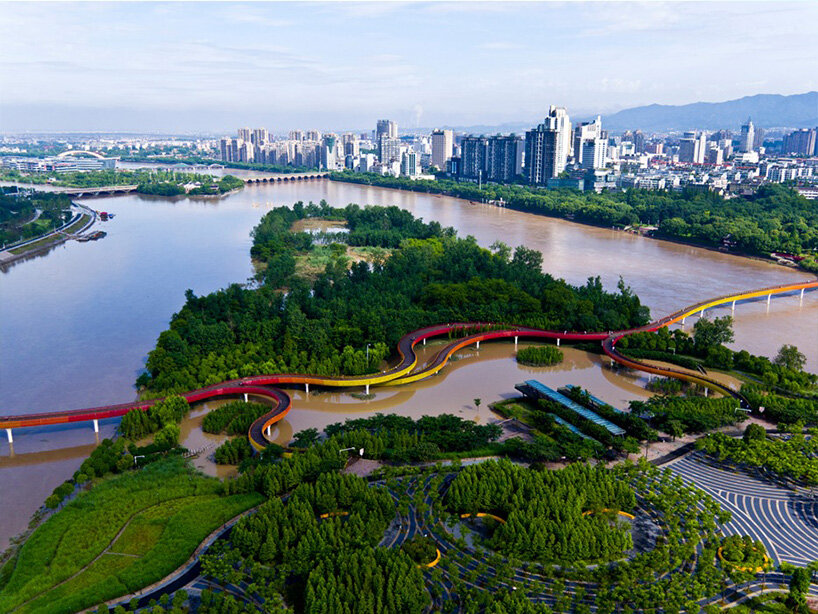
Jinhua Yanweishou Park
From theory to prototypes
The seeds of the ideas of the Sponge City were planted in the mid -nineties when the research of Yu in Harvard and later in China suggested to integrate wetlands and floodplain in urban form. In 1998 he introduced the idea of security patterns to plan, framework of rivers and wetlands as safety infrastructures. In the early 2000s, these ideas materialized projects such as The Beijing Olympic Green (later Houtan Park) and rainwater systems in Shenyang, which tested wetlands as green sponges that were able to mitigate both drought and floods.
By 2005, Yu had consolidated the idea of ecological rainwater management and was committed to what he called 'Negative planning', Design with natural processes in the eye.
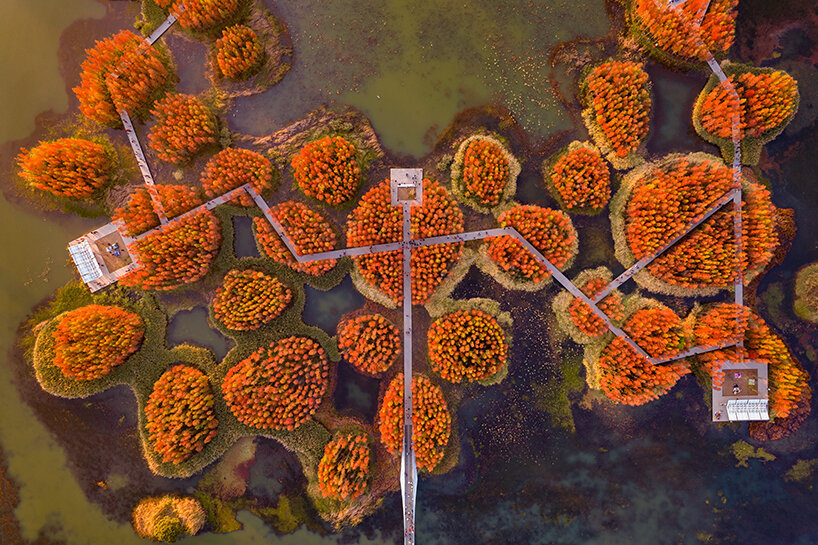
Fishtail park
Milestones: Projects that have proven the concept
Houtan Park was built for the Shanghai Expo 2010 and quickly became a flagship example with a wetland on the river, which filtered the dirty water and doubled as a public park. He later won the Award of Excellence of the American Society of Landscape Architects. Soon afterwards, the Harbin Qunli rainwater park transformed 34 hectares of wetlands into a living sponge that was able to absorb urban drains and at the same time create biological habitats.
As a devastating floods in 2012, Yu publicly criticized trust in the gray infrastructure and used national television to demand sponge cities. His advocacy advised to pave the way for the Chinese State Council to start the Sponge City program in 2014 and to arrange pilot projects across the country.
Between 2014 and 2018, Sponge City pilots were distributed in dozens of Chinese cities. The Turenscape company from Yu refined the approach with projects such as the Sanya Dong'an moisture area and the Olympic forest park in Beijing and set the concept for modular life cells, networks of ponds, terraces and wetlands, which act as green infrastructure in various urban standards.
The International Federation of Landscape Architects awarded Sponge City projects for ecological design, while un Habitat and the World Bank quoted them as models for the climate-adjusting planning. By 2018, Sponge Cities had become a central pillar of China's urban strategy.
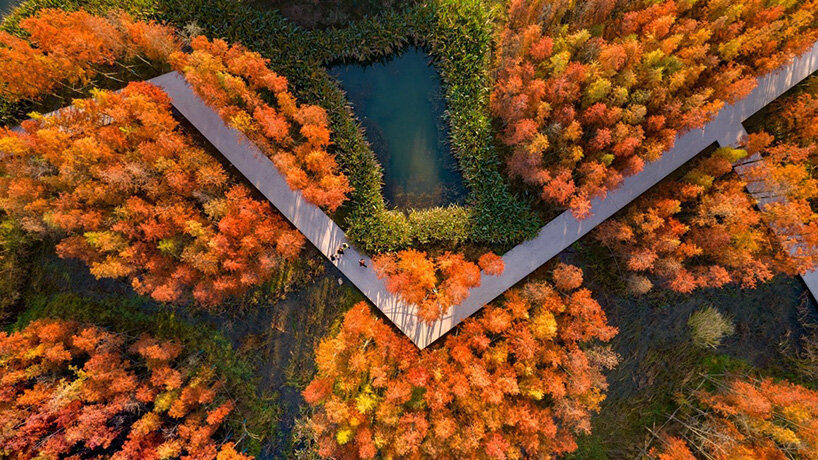
Turenscape converted a disused 126 hectare water landscape into a floating forest
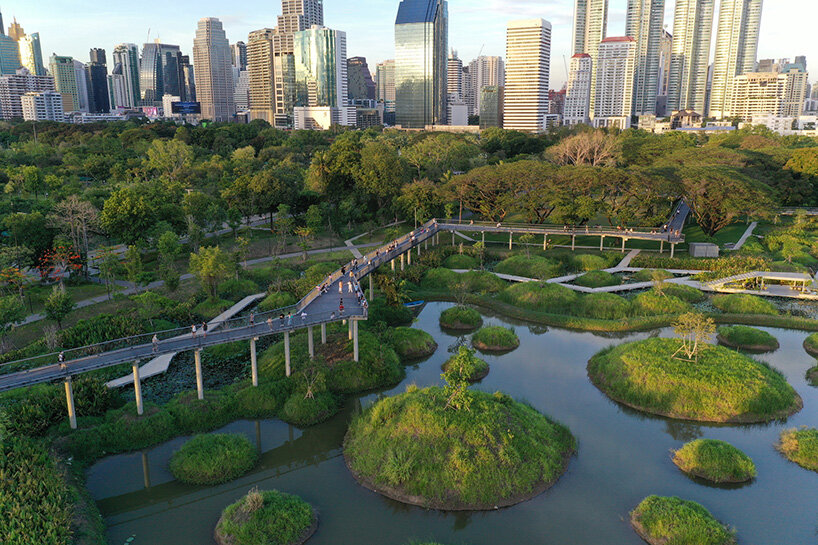
Benjakitti Forest Park | Image © Srirath Somsawat
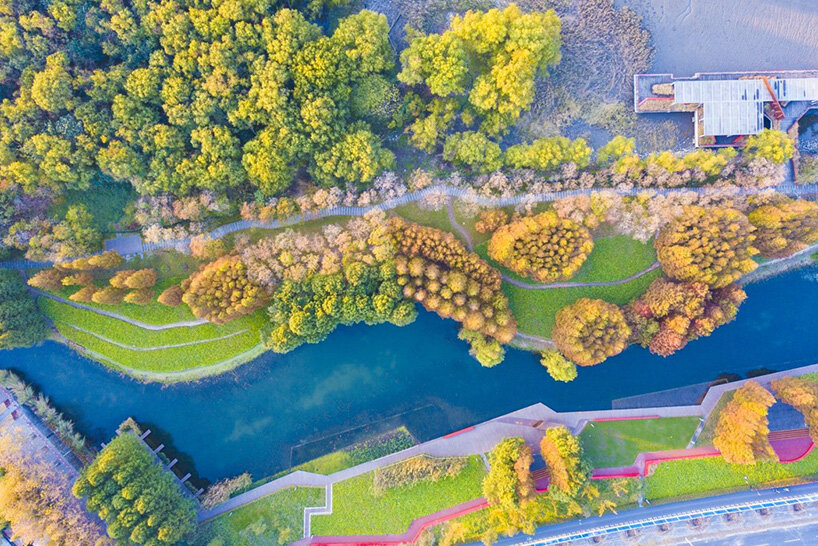
Shanghai Hutan Park
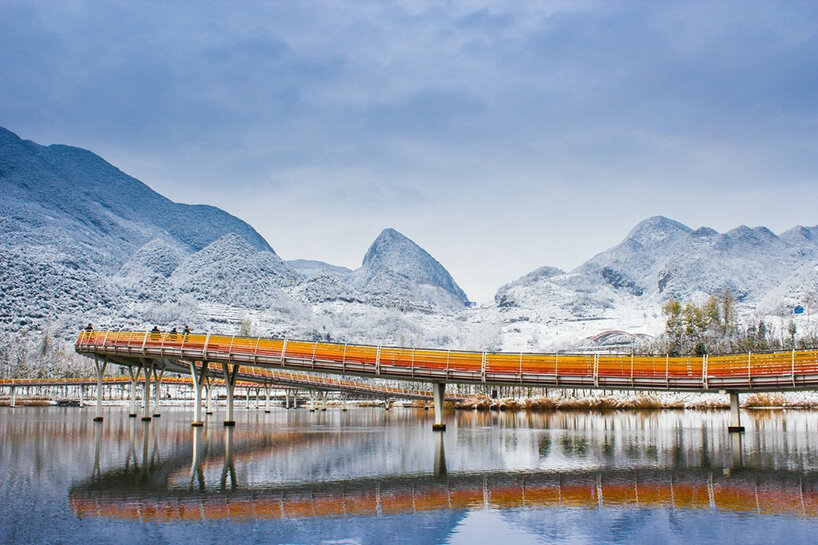
Liuupanshui Minghu Wetland Park
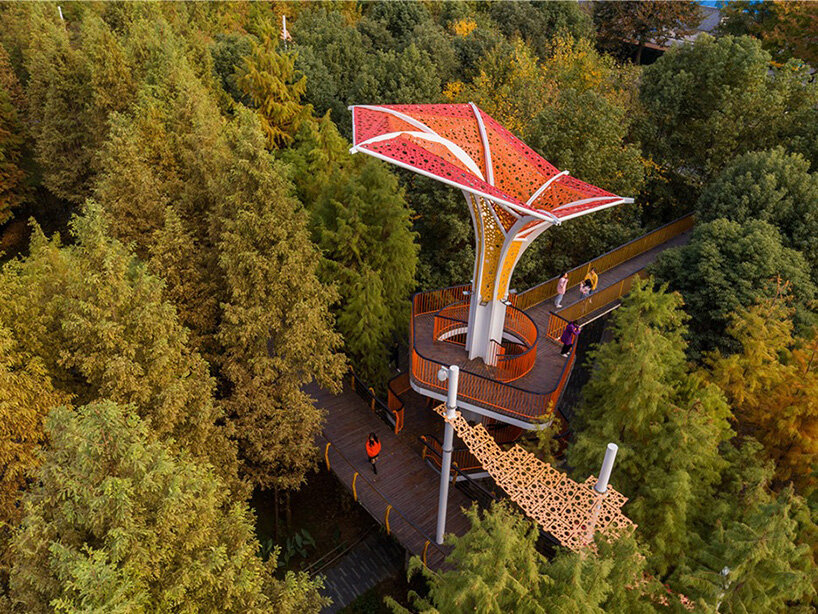
Yichang Yunhe Park
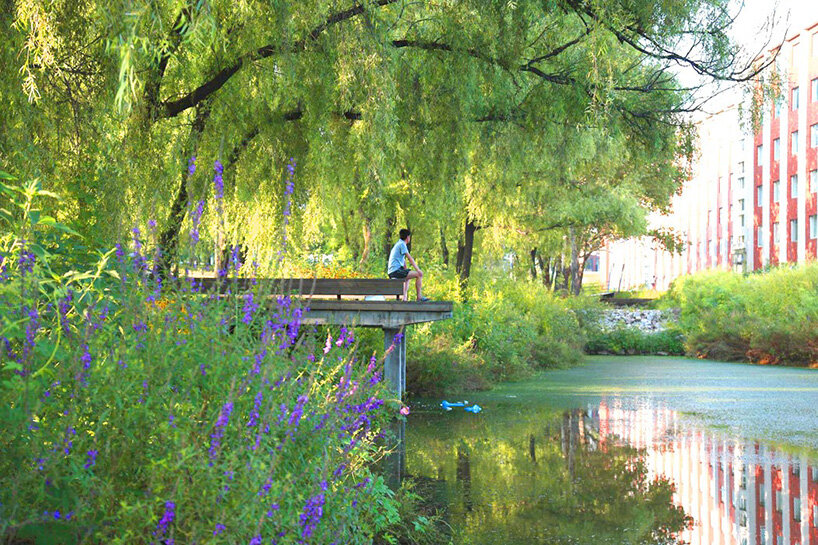
Liaoning Police and Justice Administrator College Sponge Campus
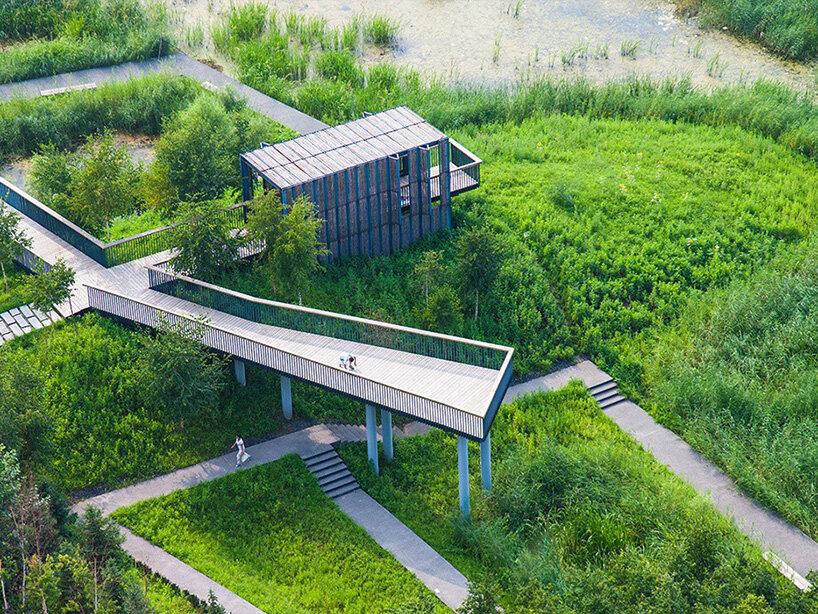
Harbin Qunli Wetland Park
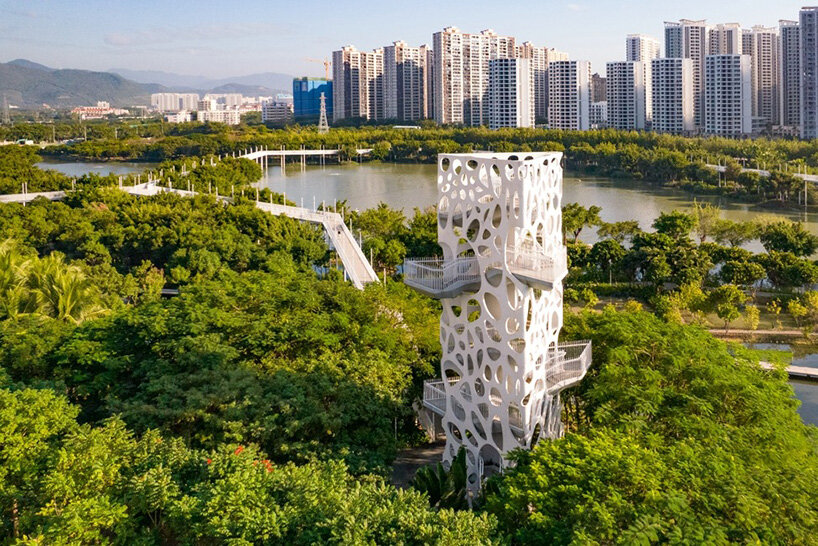
Sanya Dong'an Wetland Park
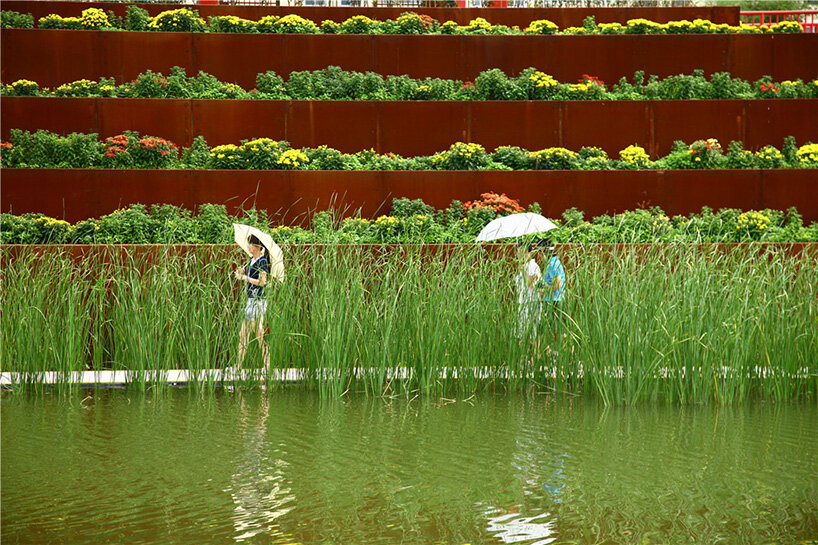
Tianjin Qiao Yuan Park
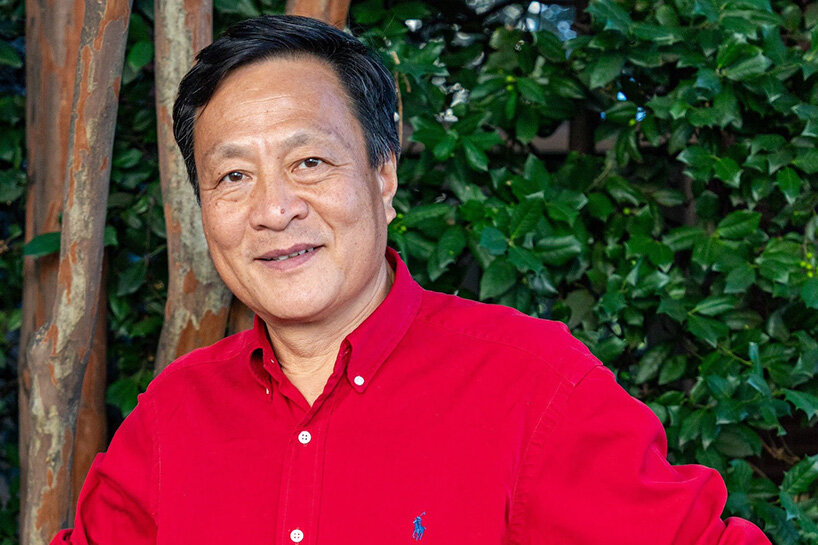
Congjian yu portrait | Image with the kind permission of the cultural landscape foundation
Project information:
Name: Sponge cities
Architect: Congjian Yu, Türkiye | @Kongjianyu_Turencape
